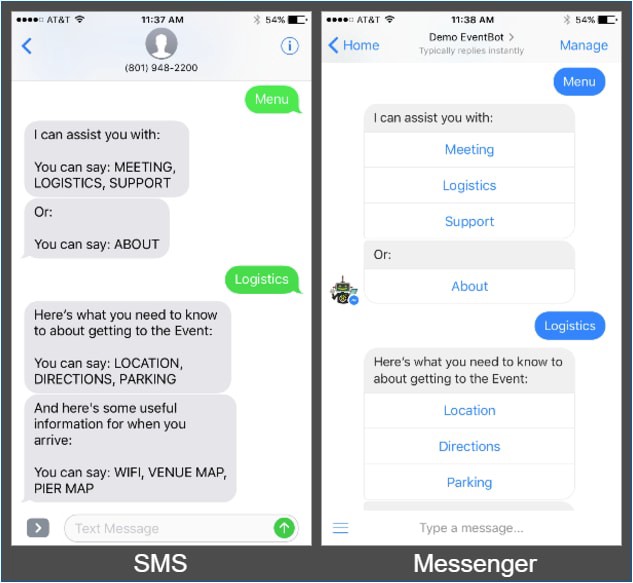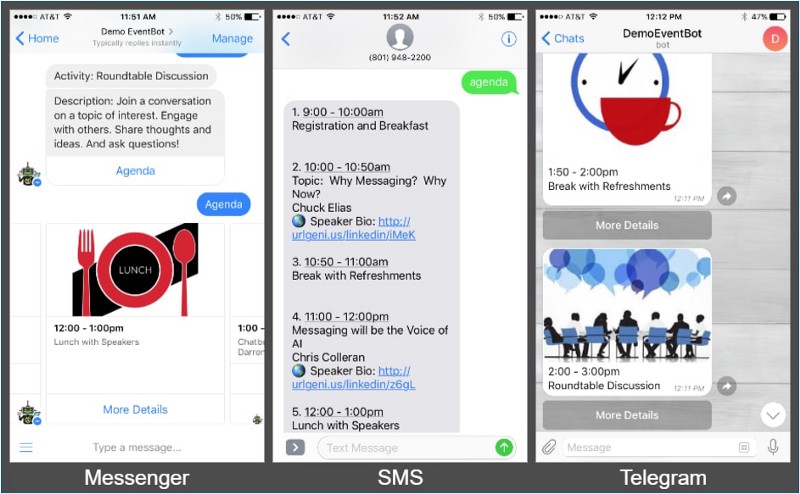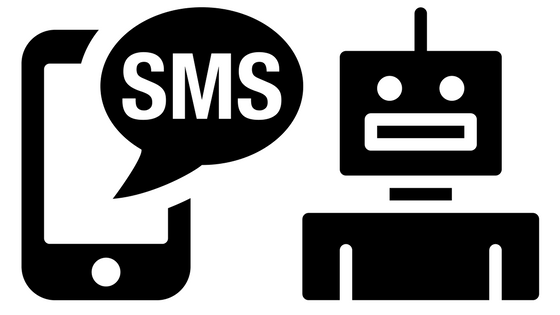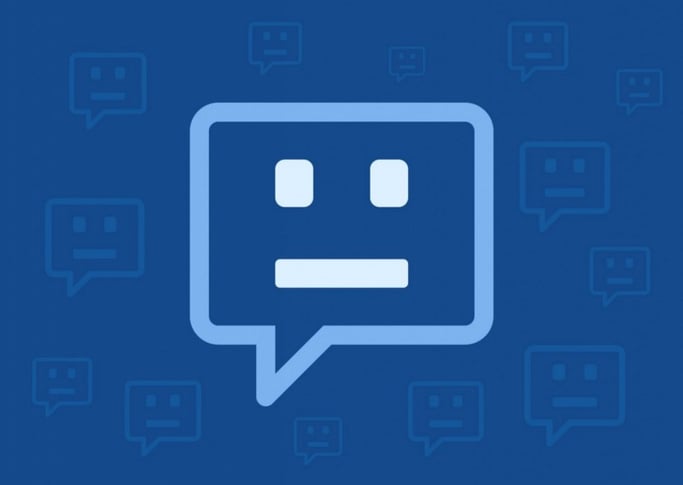While chatbots are not new (having got their start in 1966), they have become increasingly relevant. This is being driven by advances in Artificial Intelligence (AI), more specifically in the areas of Natural Language Processing (NLP) and Natural Language Understanding (NLU), a sub-field of Artificial Intelligence that is focused on enabling computers to understand and process human languages, to get computers closer to a human-level understanding of language. With these advances come many new capabilities, including smarter and more sophisticated chatbots.
Why then, with the tremendous excitement about chatbots, is there also considerable disappointment in the technology?
While bot and messaging platforms have made it relatively easy to develop and set up a chatbot, we are quickly realizing that making a good one—one people actually want to talk to isn’t so easy. As with any new technology and the capabilities it affords, there is still a lot to figure out. New fields of experience and areas of expertise are still being developed.
One of those areas of expertise is the emerging skill of writing chatbot conversation. I wrote my first chatbot conversation in April 2016 and can attest to the dearth of resources and advice available on this topic. I would like to change that! And I’d like to start by sharing some of my real-world experience designing and writing conversations for chatbots used in the event industry, the enterprise and services businesses. Maybe you are faced with writing or being responsible for chatbots in your organization. Maybe you are a bot builder for whom writing is not your core competency. Perhaps you are a writer considering a new medium for your talents. Or maybe you’re just genuinely curious about this topic. Whichever your reason for reading, it is my hope that you will find value in this series.
Let’s get started!
Know Your Audience
One of the basic tenets of writing is to know your audience. Writing a chatbot conversation is no different. Here are three key things you should know about your audience along with the implications they will have on your chatbot’s conversation.
#1 — Solve Their Problems Simply
Ensure your chatbot has a clear purpose and adds value for your audience. If it doesn’t, it’s not a good use of your time or that of your audience. Seek out use cases for chatbots that leverage their unique attributes (available 24x7, no app to download, no waiting on hold or for a live chat agent to respond, etc.) to solve problems and address needs more quickly and simply than existing solutions. To get this right means you need to understand 1) what your audience is trying to get done, 2) why they are trying to do it, 3) how they are currently approaching it and 4) what would be a satisfying outcome for them. Here are two resources on methods that can help you get this right: Jobs-To-Be-Done and User Interviews.
#2 — Be Where They Are
Once you have clearly defined your chatbot’s purpose, you will need to identify what messaging platforms your target audience uses and understand the capabilities/limitations of each. Popular messaging platforms that support chatbots include Facebook Messenger, SMS, Web, Kik, Skype, Telegram, Viber and Slack. Below are four dimensions the platforms vary on, along with examples to illustrate the differences that will factor into your selection:
- Geography — WhatsApp is the dominant world leader in text communication that crosses international barriers, but until recently hadn’t supported chatbots. Of the platforms that have been supporting chatbots longer, Facebook Messenger is popular in the US, Canada, and Australia. SMS text messaging leads the market in North America, but less so in other parts of the world where texting is pricey. Viber leads in Eastern Europe and the Middle East.
- Demographics — Kik focuses on teens and early 20-somethings, Facebook Messenger is more popular among women than men, and SMS with baby boomers.
- Setting — Slack is chatbot-compatabile and primarily used for workplace communications, while the other platforms tend toward more B2C or personal use.
- Capabilities/Limitations — SMS text messaging,, the oldest platform has been in existence for over 20 years. While this makes it a major strength, this platform is limited to text-based messages. The newer messaging platforms, often referred to as OTT (Over the Top), offer more efficient and richer experiences via visual affordances and interactive features such as buttons, quick replies, carousels and cards.
The capabilities of the platform(s) you select will have a significant impact on the design and implementation of your chatbot’s conversation. Let’s take a look at two examples.
Buttons — Users can simply tap a button to trigger an action. For example, tapping a button labeled “PARKING” presents the user with a text response, “Here are the available parking options,” with relevant information, like an image of a map showing the available garages and links to driving directions. On platforms that don’t support buttons like SMS, your users will have to type the button label “PARKING” vs. merely tapping on the button. This means you’ll want to keep your labels succinct. On platforms that support buttons, you can include more descriptive text and images on button labels to more effectively guide users and help them discover what your chatbot knows.

Carousel —This is a stream of horizontal scrolling containers that can include images, text and buttons. Carousels work well for presenting catalogs, agendas and menus of items. On platforms that don’t support or fully support carousels, the carousel will be presented vertically. It will be functional with text and actions and may or may not support images. Below you can see that Facebook Messenger fully supports carousel (swiping left or right scrolls the Agenda horizontally), SMS does not support carousel and Telegram partially supports carousel.

As you can see there are a lot of implications for your chatbot when it comes to platform choices!
#3 — Speak Their Language
In this case, I’m not referring to English, Spanish or German, but rather factors that can influence how well your chatbot converses with your audience. Here are the top three key factors to consider:
- Demographics — The good news is that texting has become ubiquitous and messaging apps are now the most widely and frequently used apps on a smartphone. With 92–100% of US adults texting daily, the only thing new about a chatbot experience will be who is on the other end! Of course, you may need to adjust the text-speak your chatbot uses for your audience’s age and gender.
- Literacy Levels —Consider how your chatbot will handle queries from users who may struggle with spelling or literacy. Or what about users who don’t speak English as their first language? Literacy rates are lower in the US than most people realize so these are not unfounded concerns. Fortunately, AI tools are available that can help your chatbot address these challenges. Microsoft Cognitive Services is a good place to start learning about these.
- Context and Situation — Think about what your audience will be doing when they interact with your chatbot and where they will be. How your chatbot converses with a busy professional that needs to know where to charge their iPhone at a conference vs. a user relaxing at home with basic questions about a product likely will be different. Regardless, just ensure your chatbot solves their problem or addresses their information need quickly and simply. Then, everybody wins!
In Summary
While it’s relatively easy to develop and set up a chatbot, making a good one isn’t always easy. There are many factors to consider and there is a lot to figure out in this new field. What this means is that new skillsets and areas of expertise are being developed one of which is chatbot conversation design. The more knowledge we acquire and skills we develop, the better our future chatbots will be. So what are you waiting for? Roll up your sleeves and get started today!
Check out Part II — Bringing Your Chatbot to Life, where I cover the important aspects of defining your chatbot’s identity, address whether you want to make your chatbot human-like or not, delve into the four dimensions of voice and answer the question of whether or not to assign a gender.


